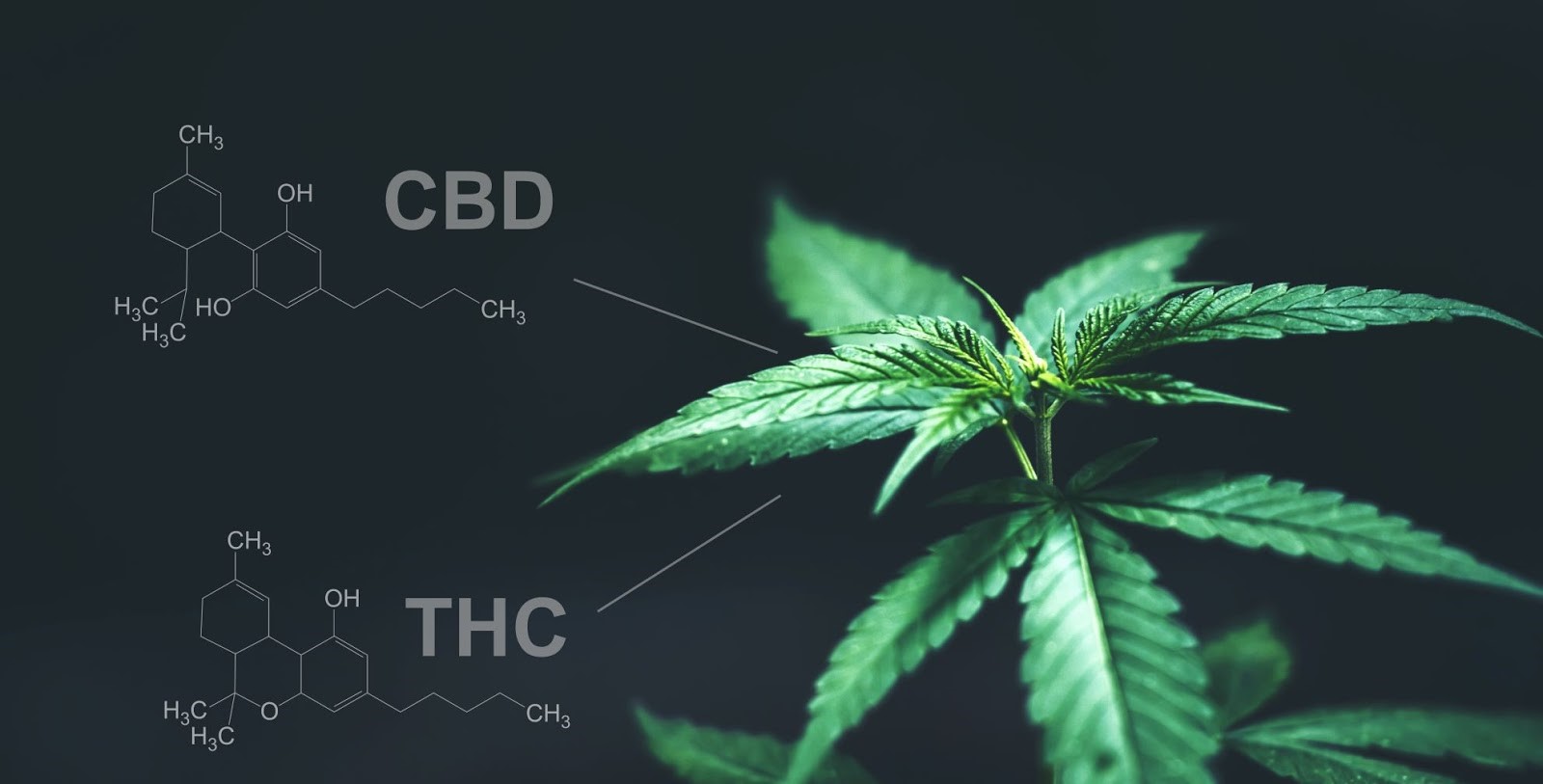Tetrahydrocannabinol and cannabidiol, better known as THC and CBD, respectfully. They both come from the same plant, but are vastly different in their properties. So we at DC Alchemy would like to look into the differences between CBD and THC.
First, you’ll commonly see the words “hemp” and “marijuana” when searching for either product online. They are the same plant — deriving from cannabis sativa — but they are not exactly the same thing. Cannabis that has less than 0.3% THC is considered to be hemp, while cannabis over the 0.3% threshold is called marijuana.
So, in other words, the amount of THC in the part of the plant determines if it is considered hemp or marijuana. That’s also how you tell if it’s CBD or THC too. CBD comes from hemp, while THC comes from marijuana.
Both compounds interact with your body’s endocannabinoid system, but they have very different effects.
What is CBD?
Cannabidiol is used to treat various medical conditions such as seizures, inflammation, pain, psychosis, mental disorders, inflammatory bowel disease, nausea, anxiety, migraines, and depression. Unlike THC, it is legal in all 50 states without a prescription from a doctor.
CBD does not have any significant side effects; anything you experience is likely the result of drug-to-drug interactions between CBD and other medications you may be taking.
CBD is not fatal — you cannot overdose from it. It also does not produce any psychoactive effects; you cannot get high from CBD.
It can be consumed in edibles such as baked goods or gummies, in liquid doses, vaped, or applied as a topical cream. When vaped, the benefits of CBD are felt faster than when eaten and can help with relaxation, pain relief, stress, anxiety, and more.
What is THC?
Tetrahydrocannabinol is the main psychoactive compound in marijuana. It gives you the high sensation when you consume, smoke, or vape marijuana.
Unlike CBD, THC is not legal everywhere. In fact, federal law prohibits the use of both substances. Thankfully, states have the power to decide their own marijuana laws, thus resulting in 33 states allowing the use of marijuana and THC for medical purposes.
THC is used to help with conditions such as pain, muscle spasticity, glaucoma, insomnia, low appetite, nausea, and anxiety.
It can also cause side effects, such as increased heart rate, coordination problems, dry mouth, red eyes, slower reaction times, and memory loss. These side effects are part of the compound’s psychoactive properties.
Like CBD, THC is not fatal — you cannot overdose from it.
Vaping CBD vs. Vaping THC
Vaping CBD and THC do not produce the same effects. Remember, they are not the same thing, despite coming from the same plant!
When vaping them, you have the following options:
- High THC, low CBD (10-30% THC, trace amounts of CBD)
- Balanced CBD/THC (5-15% THC and CBD)
- High CBD, low THC (5-20% CBD, THC under 5%)
- Pure CBD (between 0-0.3% THC)
According to Leafly, high-CBD strains can deliver clear-headed functional effects without any high. They are preferred by THC-sensitive consumers and do not produce side effects such as anxiety, paranoia, and dizziness. High-CBD strains or pure CBD is a common and popular choice for those medicating throughout the day to treat chronic pain, inflammation, or anxiety.
A more balanced strain will produce a small amount of euphoric highs, though they are still much less likely to produce side effects. These are the most effective at treating pain and providing a mellow buzz.
High THC strains provide the strongest high with the best chance of producing negative side effects. Effective in treating chronic conditions, many choose these strains to treat more severe pain, such Crohn’s disease.
Remember — CBD is the only completely legal substance. Only 33 states have legalized the use of medical marijuana and THC.
If you’re looking for a premium vaping experience, check out our store at DC Alchemy. Our CCELL products have next-gen technology that reduces leaks and increases the smoothness of draws.
Do THC and CBD Show Up in Drug Tests?
THC will show up in drug tests. If you have a prescription, be open with who is requiring the test about your medication history before you take the test.
CBD may not show on drug tests, especially if it is pure. There are some CBD-sensitive drug tests available, but it will most likely not appear on standard tests. If you are taking CBD with a higher dosage of THC (more than 0.3%), there is a good chance it will appear on a test as THC.
A Breakdown of THC vs. CBD
Below is an easy-to-follow breakdown of THC versus CBD, according to Healthline.
CBD and THC both relieve the following:
- Pain
- Nausea
- Migraines
- Anxiety
- Insomnia
- Inflammation
*THC does NOT help with depression, seizures, or psychosis, while CBD does not increase appetite.
Differences:
- CBD is legal
- THC is only legal in 33 states for medical purposes
- CBD does not produce a high
- THC does
- CBD does not produce side effects
- THC can cause anxiety, paranoia, and dizziness
- Both can show on a drug test if the THC concentration is higher than 0.3%.
